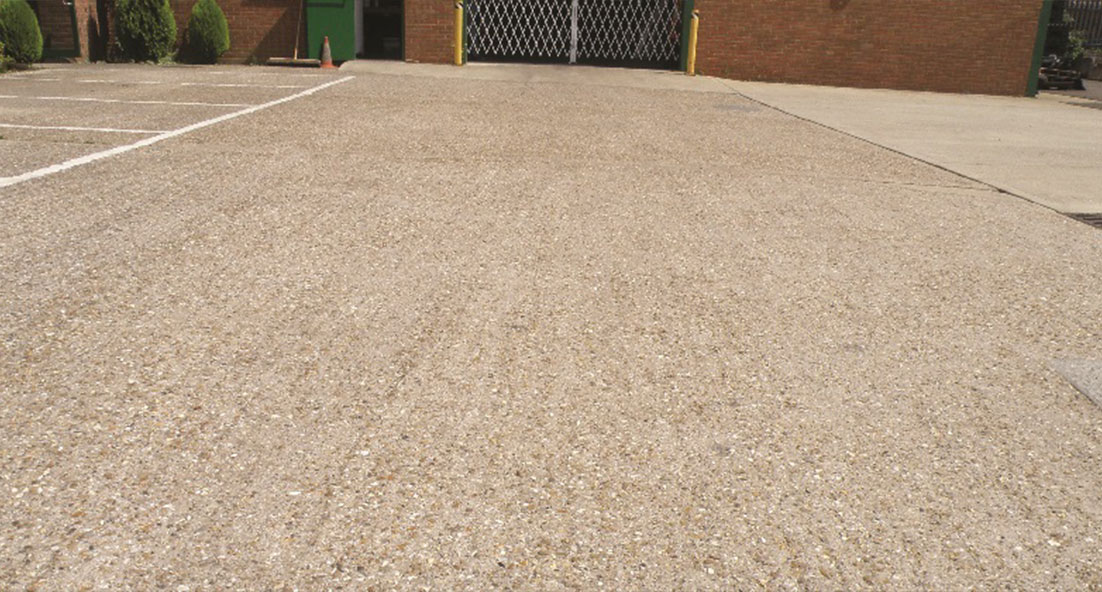
Concrete can become pitted due to impact damage and more commonly, wear and tear. Damage can also be caused when concrete is too wet when first laid, the fast drying of the concrete after laying or damage due to frost.
When resurfacing/repairing concrete, it is important to remove any weak laitance or loose material from the surface or you will find that the more you sweep, the more dust is formed. You may have to consider ‘flooding’ the surface with an epoxy that is specially designed to penetrate the surface and re-lock the structure again. ‘Flooding’ the surface is recommended primarily to use on very weak or frost damaged concrete surfaces.
It is important to ensure that surfaces are prepared (swept and primed) before undertaking any repairs.
Below are three ways you can repair pitted and spalled concrete
Floor Resin
If you are using a resin that cures within 2 hours, it is recommended that you spread and level out the resin with a squeegee or steel trowel. Some particular resins can go as thin as you needs which mean that there will be no ridges around the edge of the patch, and no digging out is required – the perfect low maintenance solution. Although this particular resin cures unbelievably hard, it is important to note that paint doesn’t usually stick to it.
Epoxy Floor Coating
Epoxy floor coating is the best solution for heavy traffic flooring. However, should you have some small holes or pitted areas that you would like to smooth out, particularly immediately prior to applying the product as floor coating – a trick of the trade is to simply mix in some kiln dried sand (this is the ‘silver sand’ they use for block paving). By mixing in the sand, you can turn the resin into a form of mortar and of course depending on how much sand you add, you can make the repair runny and very thin through to as thick as you like.
Floor Screed
There are many different variations of floor screed:
- Floor screed for heavy domestic/light industrial use.
- Floor screed for heavy industrial use
- Flexible screed for areas with underfloor heating
- Flexible screed for areas with excessive vibration/movement
- Weather resistant floor screed for external use
All of the screed products are excellent for smoothing out surfaces that are either delaminating or pitted. Simply mix the specialist dry mix supplied with water and pour onto the surface. This is then levelled out with the use of a ‘pin-leveller’. A pin leveller is like a rake where the length of the pins can be quickly and easily adjusted in accordance with the depth of screed required. There is a cover plate across the front of the rake secure with wing-nuts that can be quickly and easily adjusted up and down in order to leave the pins sticking out of the bottom to allow the depth of screed required.
Cementitious Screed
This solution is primarily for external use. It is an excellent solution where damage has been caused by front or salt from de-icing. Simply mix with mixing paddles in a drill and pour onto the damaged surface. Using a squeegee, spread out the screed over the surface. Once applied, finish with a specialist roller to achieve the required finish. When rolling, make sure that this is performed in the same direction – unless of course a specific pattern is required.Should a slip resistant surface be required, wait until the screed is ‘tacking off’ and the pull the roller over the screed again. You can then achieve a ‘ridged’ finish which can provide an excellent, strong and very effective slip resistant finish, excellent for ramps, sloping areas, disabled entrances/areas/ etc.
Searching for hard-wearing flooring which combines style and substance? Ask our experts today.
